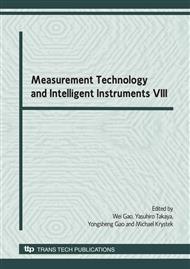p.251
p.255
p.259
p.263
p.267
p.271
p.275
p.279
p.283
New Approach to Fringe Pattern Analysis Obtained by Scanning Polished Metal Cylinders with Gaussian Beam
Abstract:
In laser-scanning measurement of cylindrical objects extremely complex interfering signals occur. They are due to superimposition of: reflected, unobstructed and scattered light. The proportions between these components vary in time and also the total intensity distribution changes. The considerations applying Fraunhofer theory are static and fragmentary, and may be concluded that the existing solutions for diffraction of 3D bodies do not fit to engineering applications. Having the above in view, the close analysis of detector signal was carried out. The obtained differential intensity characteristics allow to determine the important metrological qualities of diffraction field.
Info:
Periodical:
Pages:
267-270
Citation:
Online since:
June 2008
Authors:
Keywords:
Price:
Сopyright:
© 2008 Trans Tech Publications Ltd. All Rights Reserved
Share:
Citation:


